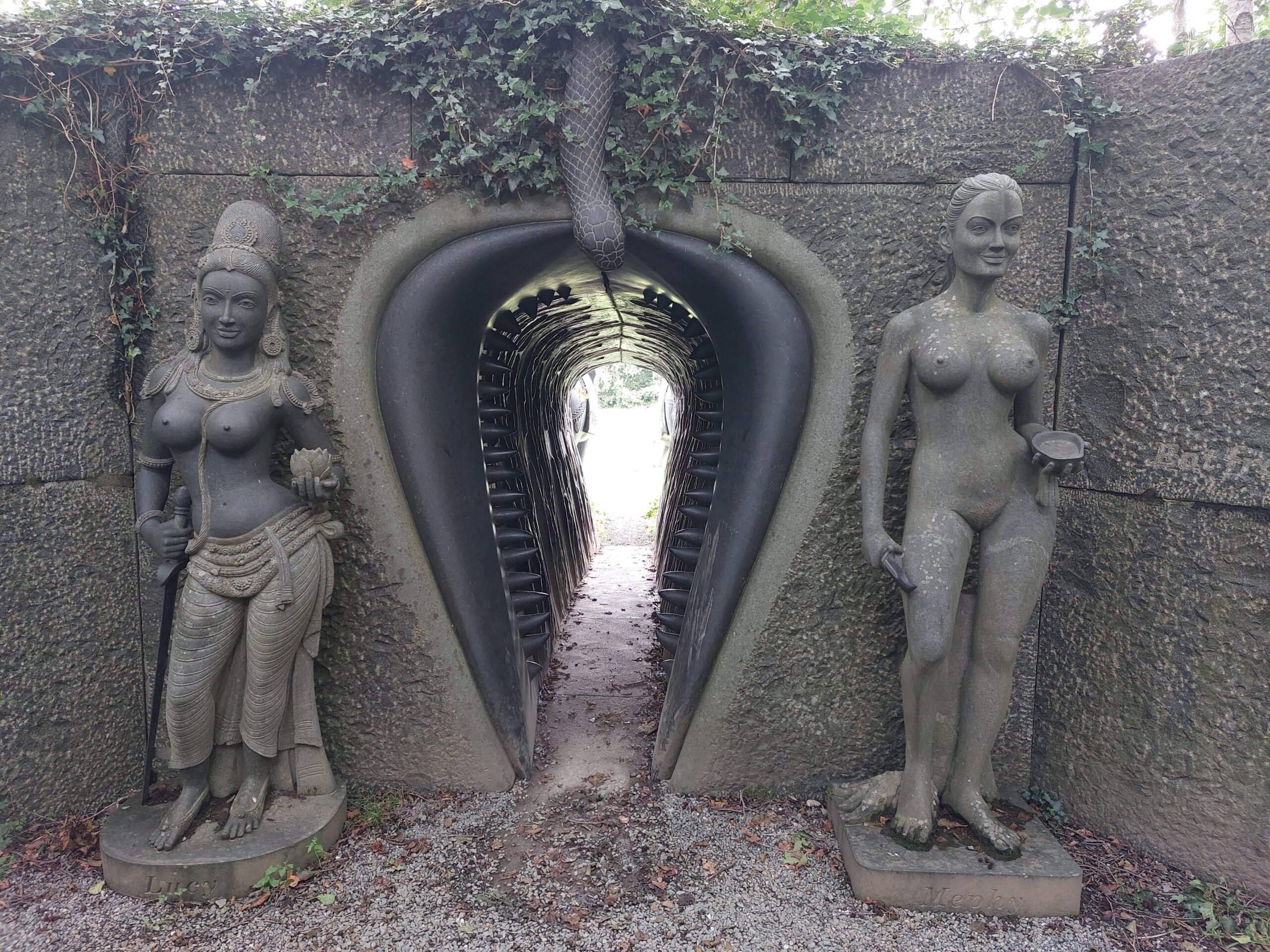A Few Gees More
What could be better than three Wild Gees flocking together? Four Gees! We dragged occasional Gee Niamh along on to the new exhibition in Dublinia about Viking Age Women. The exhibition is centred around a hypothetical Viking princess, fittingly also called Niamh. As we discovered on our trip to Iceland earlier this year, the Irish female genome is very prevalent in Norse countries. We’d like to think that was the result of Viking men coming over here, meeting Niamh over a frothy ale and falling deeply, mutually, in love. In reality, Irish women probably didn’t go willingly with the raiders and traders.
Once in Norway, however, some women managed to do quite well for themselves. There’s evidence from excavations of her burial site in Rogaland, Norway that ‘Niamh’ was wealthy and likely considered royalty. We don’t know what her name was of course, but we can tell from DNA that she had Irish roots. What she brought with her to the afterlife reveals a lot about her status and the hybrid Irish-Norse culture she came from.
She was buried in a stone coffin under a cairn and was found with golden brooches and beads, some from as far away as Egypt and Iraq. Some of her jewellery was refashioned from (looted) Irish artefacts. It’s possible Niamh retained some of the religious significance of the artefacts she was wearing though in Norse culture they were just seen as status symbols. Her grave also contained a load of drinking horns of Irish origin, another indicator of status. These drinking horns have mainly been found in women’s graves, which demonstrates “the important role women had in ceremonies and rituals connected with feasting and drinking”. Or, our Niamh was a party girl. Sláinte!
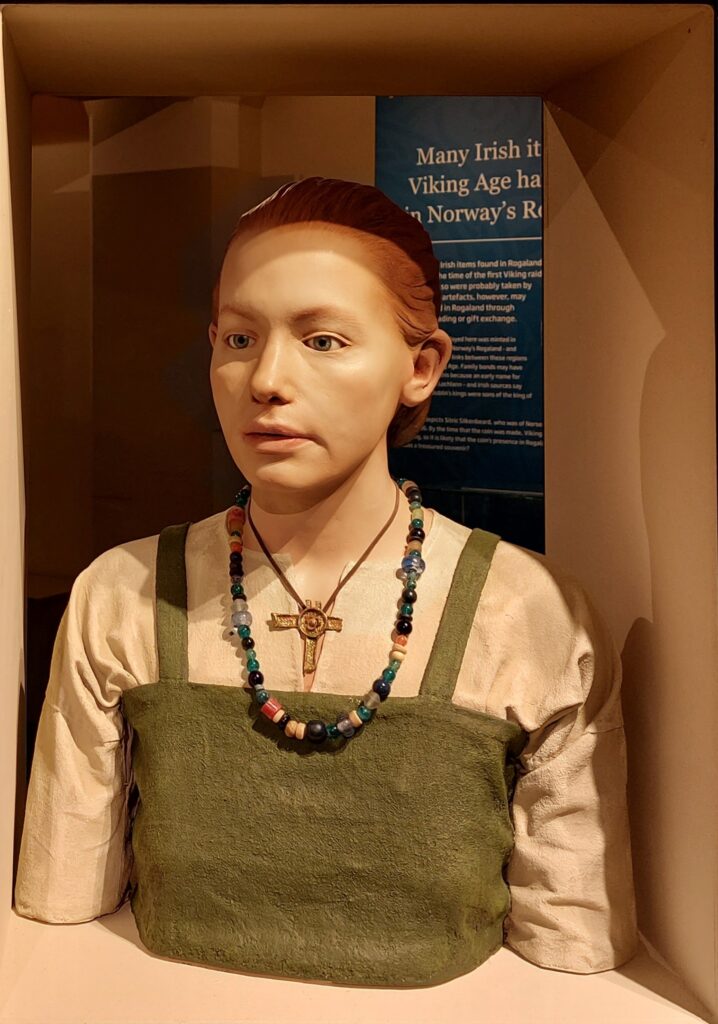
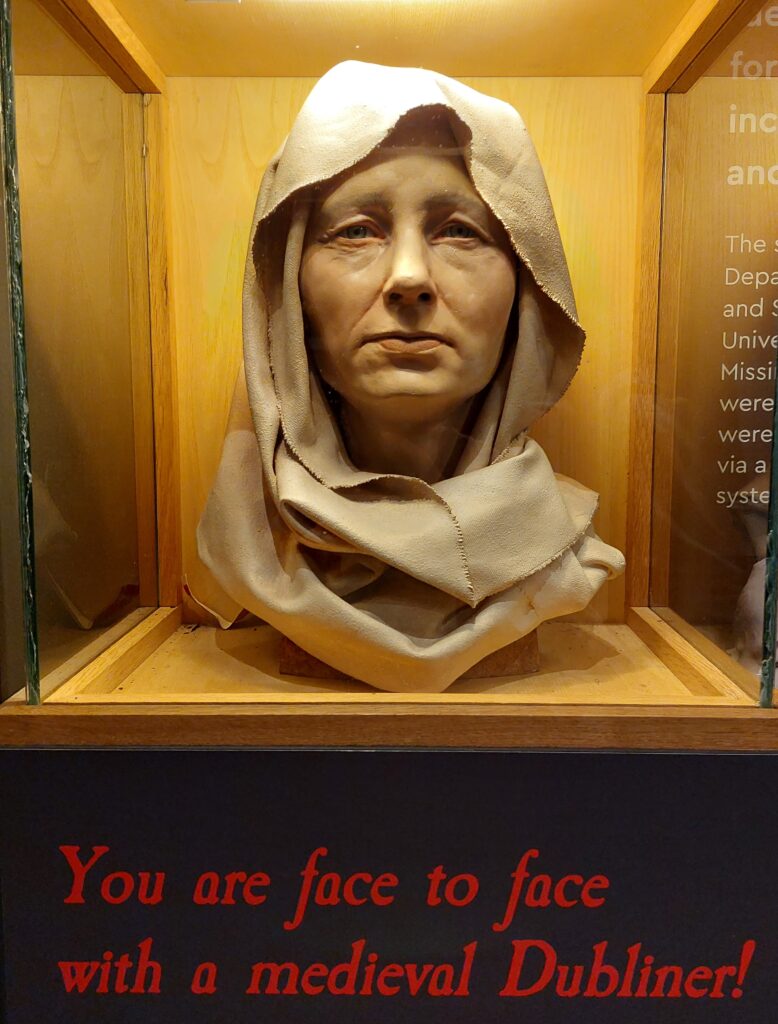
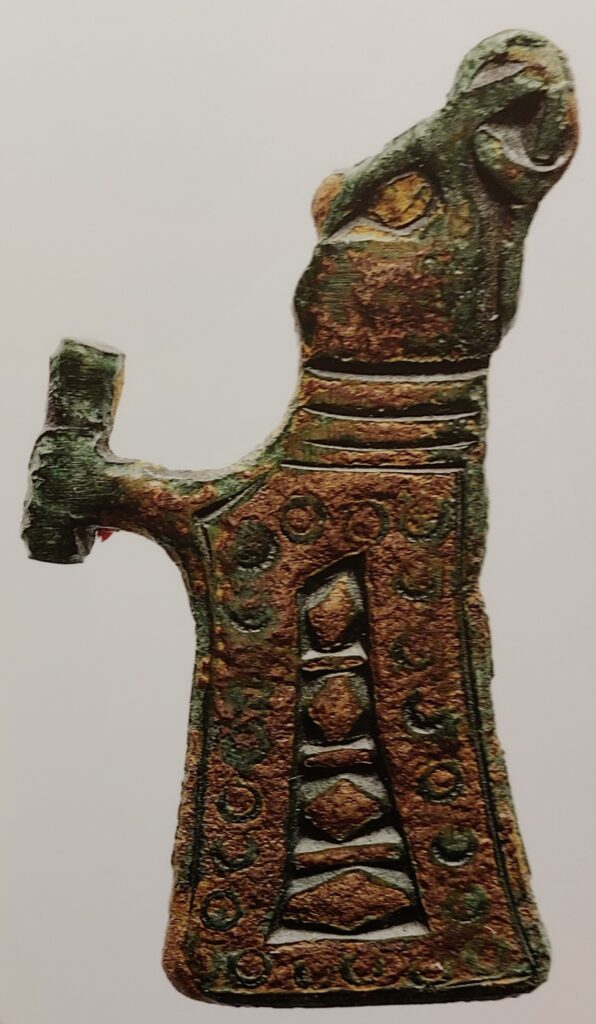
A very different life experience for the medieval woman whose remains were found in Dublin. Archaeologists can tell she was 158cm (5’2”) and between 35 and 45, so quite elderly for the 12th century. [This makes us feel old, as this is the year we all turn 50, but also grateful we live in a time when we can expect another 30 years]. She had arthritis, signs of a life of hard labour, few teeth and abscesses in her jaws. We’re all in better shape than that, to be fair. Medieval Dublin wasn’t the kindest of places for women, 15% of whom died in childbirth. There’s a greater likelihood that had we lived then we would have been one of those unfortunates rather than a Norse princess.
Niamh’s grave also contained spindle whorls, which indicate she was either a skilled weaver or a wise woman who could use them to divine the future or even shape it! As there were three of them, they could symbolise the Norns. We came across the Norns in Iceland too – sisters Urd, Verdandi and Skuld. In Norse mythology these goddesses controlled human destiny, spinning the threads of human lives and snipping them when they were over. There is a Norse saga that speaks of the Battle of Clontarf, where 12 Valkyries were discovered to have set up a loom made of dead men’s heads and entrails. They sang as they wove, deciding the outcome of the battle. Can we choose Valkyrie over princess or maternal mortality?
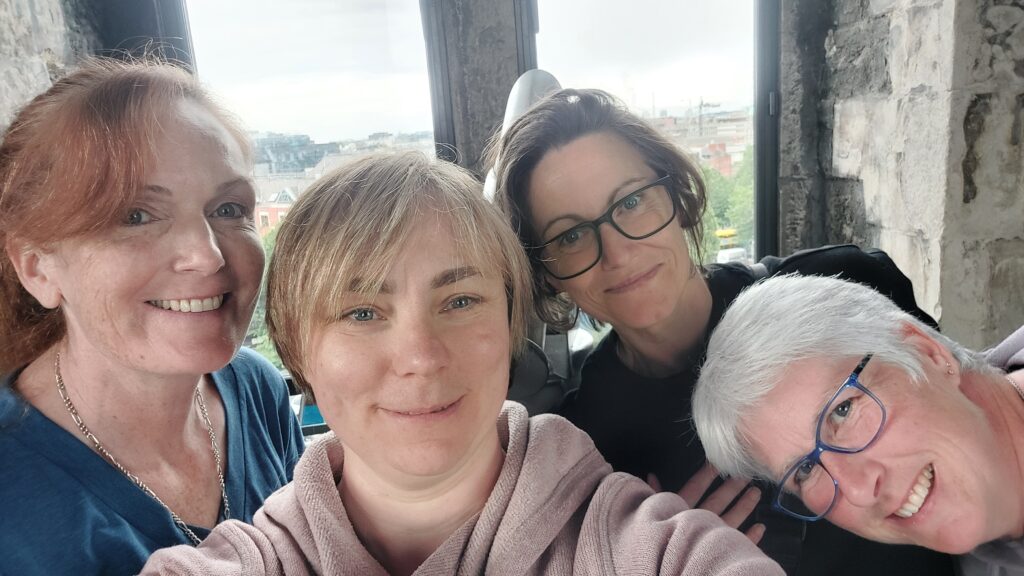
Dublinia is one of those places geared towards tourists that actually attracts people from Dublin. We’ve visited it several times since we were kids and always found it engaging. This new exhibition was a reminder of just how well they bring history and archaeology to life. We exited through the walkway in the sky joining it to Christchurch Cathedral, as giddied by this as we were as Crumlin kids on a school trip.
Miriam announced she had taken advantage of the trip to Dublin to do a Done Deal. So our next destination was to the Docklands to pick up some weights. Serendipitously, the route took us past City Quay, home of a rare in situ Project Sheela. She’s not intact, now armless and with three missing corners but still magnificent. Her hands cling on, gripping a stunning, gaping blue vulva with a big grin on her face. As far as we can tell, this Sheela was sited on the former Pornhub office to highlight their reluctance to remove illegally-shared image-based sexual abuse in 2021. It’s actually located on the wall of a car park, which has no obvious history of misogyny.
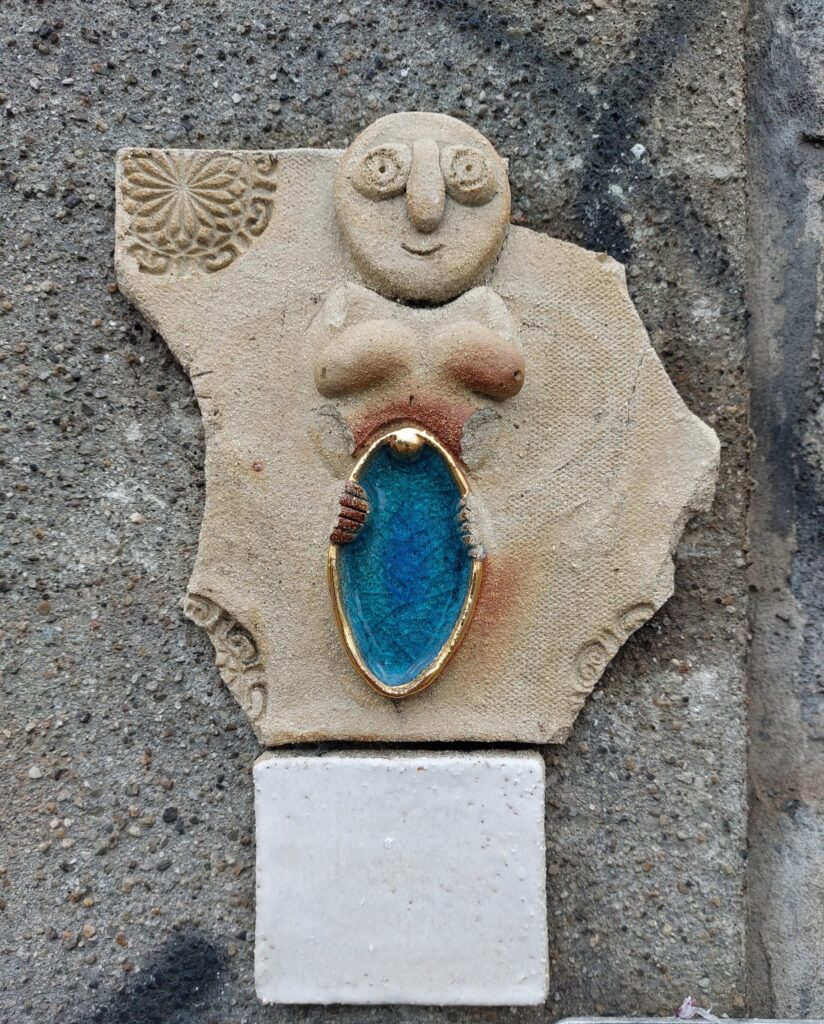
Google maps, which we needed to navigate the unfamiliar streetscape of a changing Dublin, also told us that the small park on the nearby corner was in fact Elizabeth O’Farrell Park and we visited her memorial. It’s lovely to see belated recognition of some of the 1916 women other than Countess Markievicz – who is the most memorialised historical woman in Dublin. When Google maps told us that one of the three statues of Markiewicz was a short distance away on Townsend Street, a short diversion was in order. We’ve tweeted about her multitude of statues often enough, but had never sought one out in person. We’re more focused on undertold stories and no one could accuse the Countess of that!
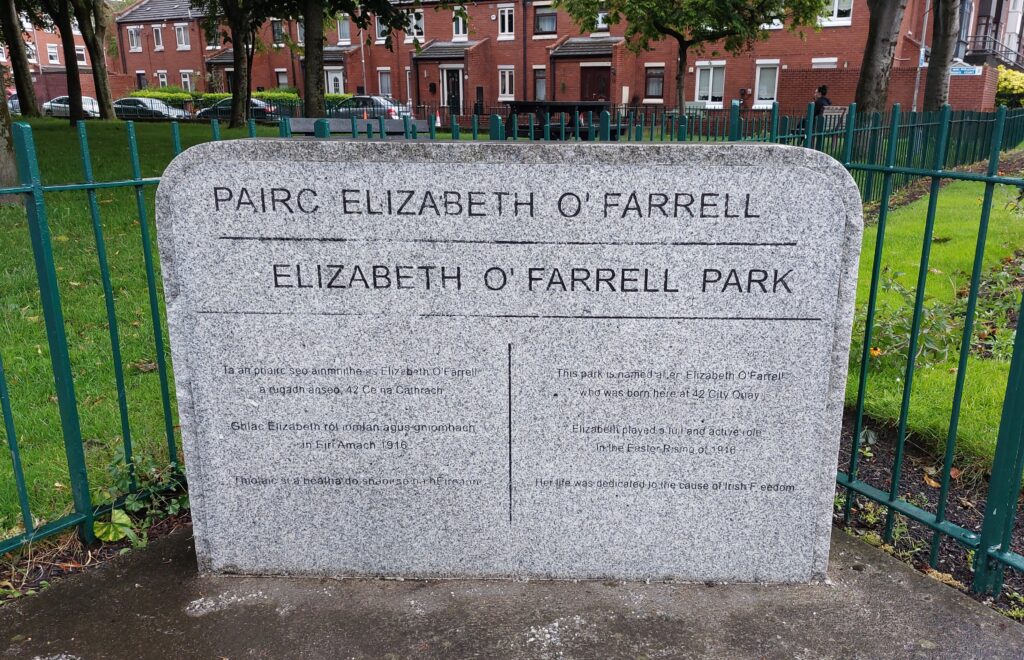
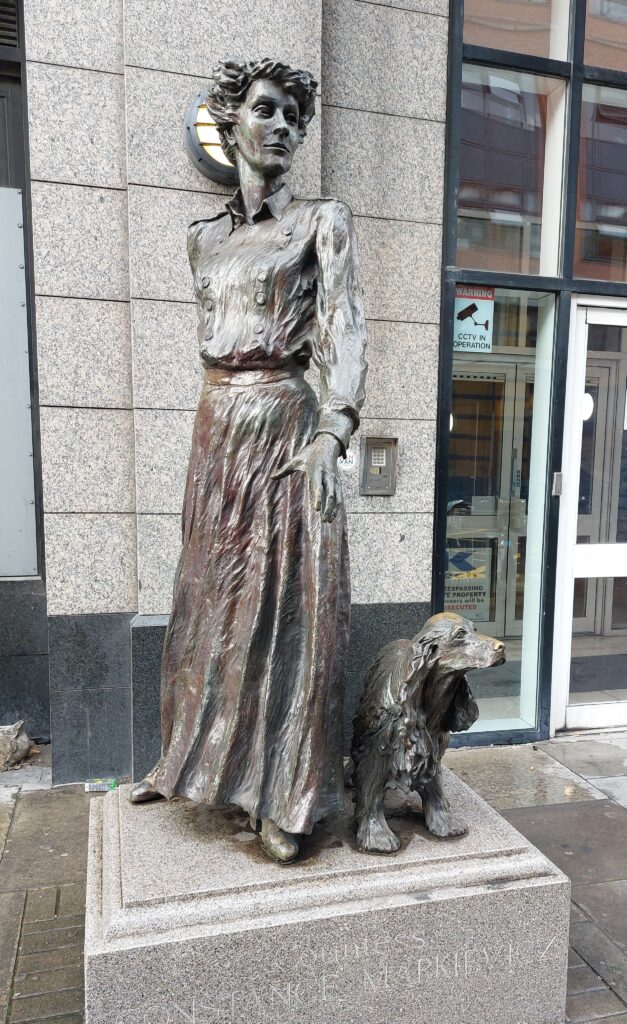
The following day we were back down to three Gees as we headed into Wicklow in search of a vagina dentata in the wild. We had also planned to include a Sheela na Gig but discovered that the Ballyknockan Inn which houses her is currently closed. It’s unlikely she’s the genuine article but a spate of pregnancies had been attributed to her in the past so we were curious to see her for ourselves. The vagina dentata is part of Victor’s Way, a sculpture park intriguingly described as a “contemplative space for adults”, which doesn’t open until 12. Finding ourselves in Wicklow with more time than we had anticipated, there was nothing for it but to go for an instagrammable brunch at Killruddery House and Gardens. Totally bougie, but a beautiful space to spend an hour.
We head to Victor’s Way on the promise of an enormous gee and we’re not disappointed. The entrance to the park is through a giant, black granite, vagina with teeth. A snake’s head takes the place of a clitoris. The vagina dentata appears in folk tales across the world, possibly as a discouragement to rape or having sex with strange women. Of course, Freud also used it to demonise women and female sexuality. This one is flanked by two naked women and has a tunnel of anatomical contours beyond the teeth. We spend some time exploring the texture (disappointingly polystyrene) and engaging with the largest gee we have ever encountered. It’s an intriguing start to the experience.
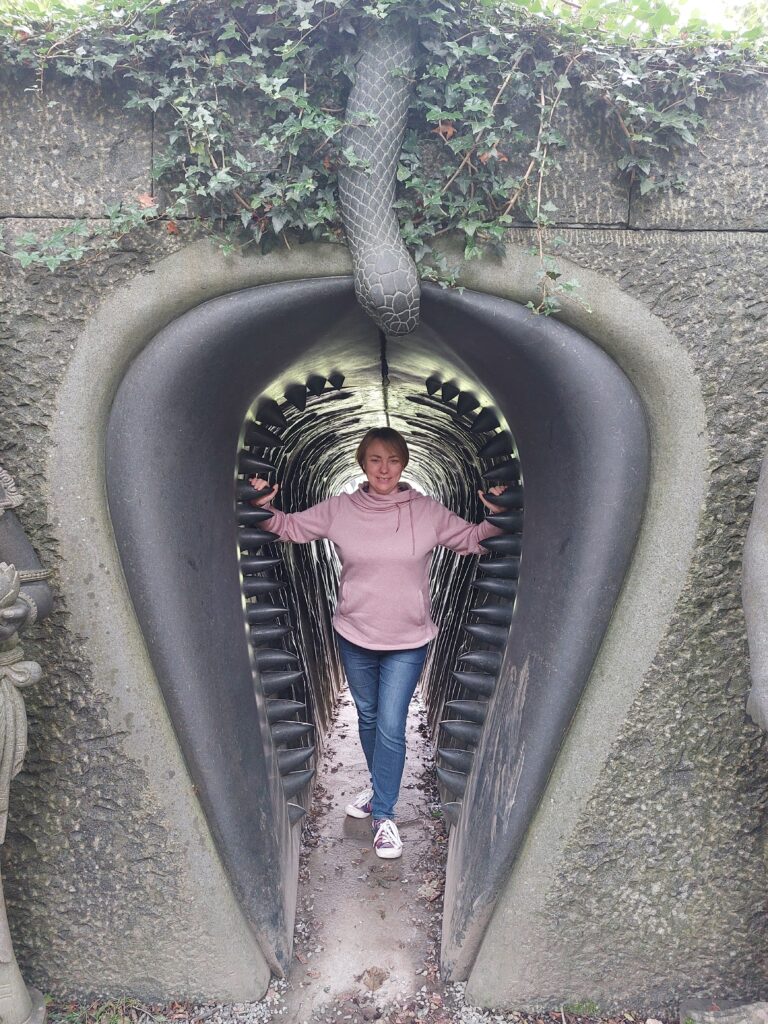
The first few sculptures are of Hindu deities but as you get deeper into the park they diversify, encompassing other religions, myths, psychology and even maths, and are accompanied by the cod philosophy of Victor himself. In a pond, dripping with algae, the gaunt figure of the Ferryman lies ‘dead in the water’, apparently representing burnout. The park sprawls over several acres of fields, woodland and lakes. It’s a pleasantly bizarre way to spend a couple of hours, with contemplation chairs laid out to lie back and forest bathe. We spend some beautiful moments by a lake on the far side of the park watching iridescent dragonflies in the sunshine and just being.
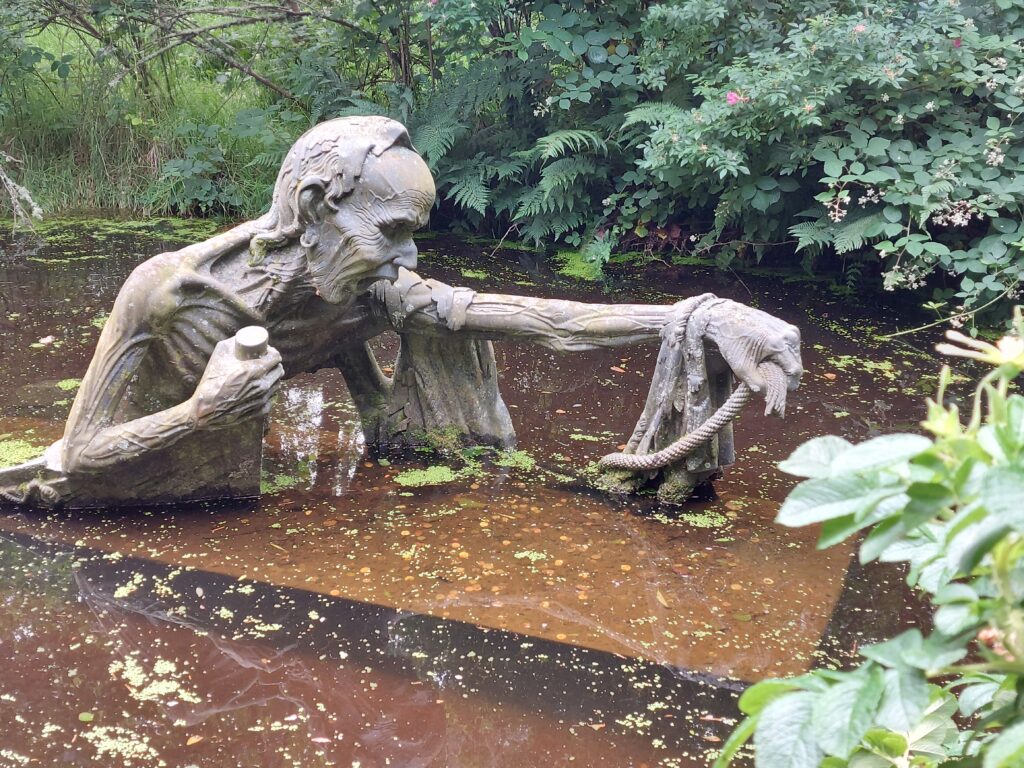
But we can’t not mention that the whole thing gives ‘male gaze-y’ vibes. What sculptures of women there are, all have spectacular porn star boobs. One figure gives birth to a (prepubescent) version of herself, while simultaneously appearing to have sex with them, breastfeed them and devour them. Even Eve, apple in hand, who represents “the mature woman” has suspiciously perky tits with nipples pointing sky-ward. As we leave, we give an appropriate salute to the one of the last statues, a giant and very phallic finger with the words “create or die”.
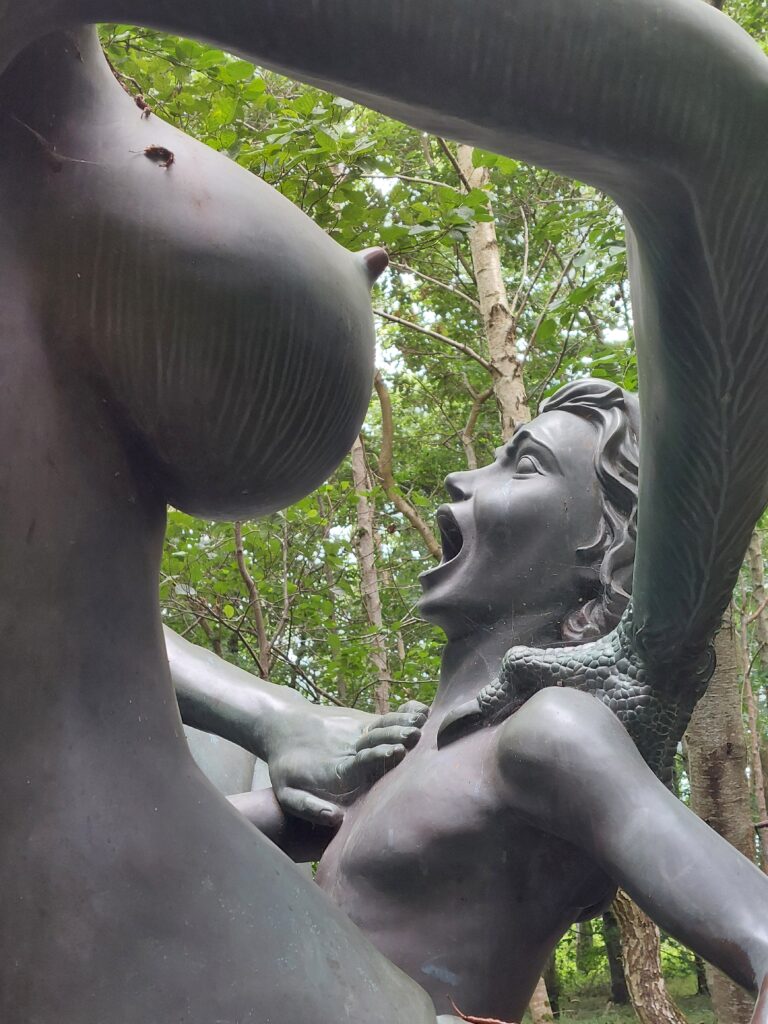
Wild Gees trips happen when we can squeeze them in and this one was a particularly brief one, but we took the opportunity to plan our next ones. Tipperary (land of the Sheelas) and Donegal are on our radar this year. Watch this space.
Bibliography
Karen Bek-Pedersen (2011). Norns in Old Norse Mythology. Dunedin Academic Press. Available as free e-book
Neil Gaiman (2017). Norse Mythology. Bloomsbury.
Paula Murphy (2021). Ireland’s sculptures: Where are the women? Irish Times, 21 April 2021.

